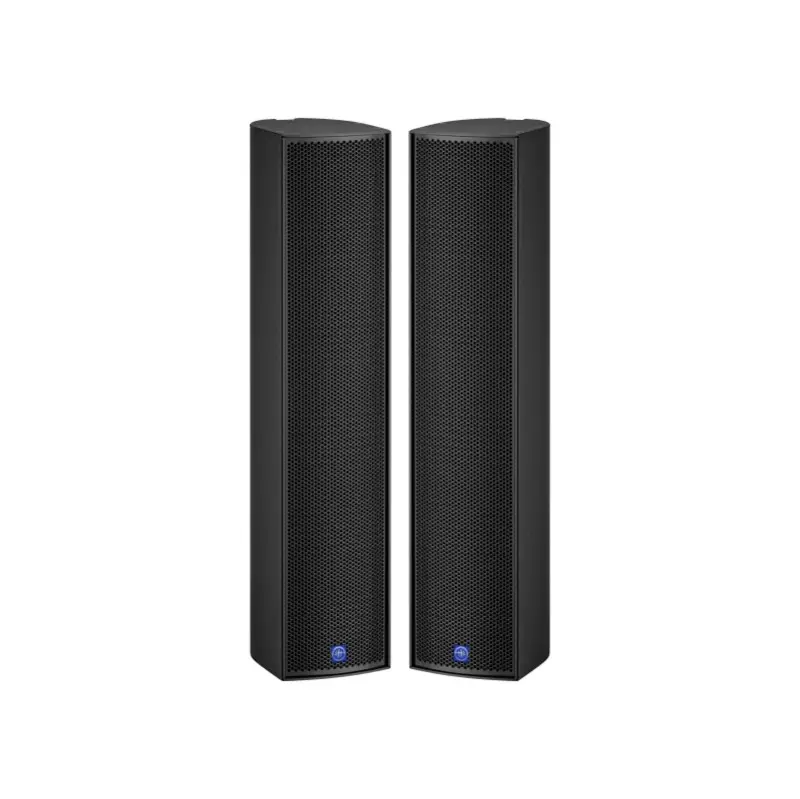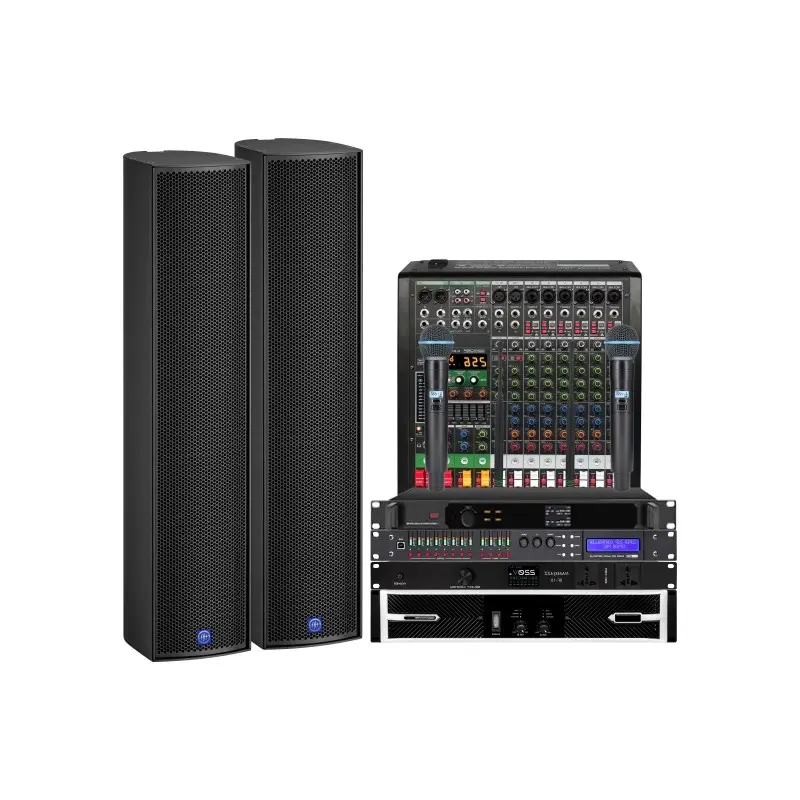Crafting an Outdoor Audio Setup That Delivers
Outdoor events and stage performances require sound systems that can deliver clear, powerful audio across large, open spaces. Whether it's a concert, wedding, community fair, or corporate event, a well-constructed sound system ensures every word and note reaches the audience without distortion or delay. Unlike indoor venues, outdoor spaces lack walls and ceilings that naturally reflect sound, making speaker placement, power management, and equipment selection even more crucial. By understanding the technical demands and aligning them with practical solutions, organizers can build a cost-effective sound system that meets professional standards without overspending.
Essential Components of a Sound System for Outdoor Events
Loudspeakers and Subwoofers
In an open environment, volume and coverage are key. Loudspeakers with high sound pressure levels (SPL) and broad dispersion angles are ideal for maximizing reach. Subwoofers provide the necessary low-end frequency response that fills out the sound and adds impact, especially for music-heavy events. Weather-resistant enclosures and sturdy mounting options are also important to withstand outdoor conditions. Choosing passive or powered speakers will also affect your overall system design and cost.
Microphones and Mixing Consoles
For live performances, reliable microphones are essential. Wireless systems offer flexibility and mobility, while wired microphones ensure signal stability. Mixing consoles, whether analog or digital, are central to managing input sources, balancing levels, and applying effects. A digital mixer with scene recall and remote control via tablet or laptop can be a game-changer in live situations, allowing real-time adjustments without being tied to the sound booth.
Amplification and Power Solutions
Selecting the Right Amplifiers
Amplifiers serve as the energy source that drives your speakers. In outdoor and stage environments, it’s critical to have enough wattage to maintain clarity even at high volumes. Consider the sensitivity rating of your speakers and calculate amplifier power based on audience size and coverage area. Look for features such as thermal protection, limiting, and overload safety to protect your equipment during long sessions.
Stable Power Supply and Distribution
Outdoor venues often lack easy access to stable electrical infrastructure. Portable generators may be necessary, but they must be rated for audio use to avoid noise interference. Distribute power using surge-protected power strips, and avoid daisy-chaining multiple cables to reduce risk. Ground fault circuit interrupters (GFCIs) and weatherproof connectors should be used to meet safety standards, especially in wet conditions.
Speaker Placement and Acoustic Considerations
Coverage Optimization
Sound coverage should be uniform throughout the audience area. Position main speakers at head height and angled slightly downward to prevent sound from escaping above the crowd. Delay speakers can be added for larger venues to ensure consistent volume from front to back. Use speaker stands or trusses to elevate units, reducing obstruction and sound reflection from the ground.
Minimizing Feedback and Echo
Proper microphone placement and gain control are crucial in avoiding feedback, particularly in live music scenarios. Using directional microphones and applying notch filters can help reduce unwanted noise. Outdoor events also benefit from less natural echo, but wind and ambient noise present new challenges. Wind screens, directional speaker setups, and real-time equalization can help mitigate these effects.
Matching Equipment to Event Type and Size
Small-Scale Events and Pop-Ups
For events with fewer than 100 attendees, a compact sound system with a pair of powered speakers and a basic mixer may suffice. Battery-powered units with Bluetooth capabilities offer convenience and quick setup. These solutions are perfect for mobile DJs, buskers, or intimate ceremonies.
Large Concerts and Festivals
Larger venues require multi-speaker arrays, dedicated subwoofers, and multiple amplifier channels. Line array systems offer consistent audio coverage over wide areas and long distances. Proper zoning, time alignment, and stereo imaging become critical at this scale. Investing in scalable systems that can grow with event size ensures future-proofing and budget efficiency.
Building a Budget-Friendly Sound System
Prioritizing Investment Areas
Not every component requires top-tier spending. Allocate more of your budget toward speakers and amplifiers, as these have the most impact on sound quality. Use mid-tier mixers and microphones that offer reliability without inflated costs. Accessories like stands, cables, and cases should not be overlooked, as they ensure the durability and ease of deployment.
Considering Used or Rental Equipment
Pre-owned professional gear can provide excellent value if inspected properly. Rentals are ideal for one-off events or when trying different brands before committing to a purchase. Our sound system solutions include flexible rental packages and hybrid setups, allowing clients to scale their configuration according to event requirements.
Simplifying Setup and Transportation
Compact and Modular System Design
Modular sound system configurations allow for easy transport and setup, especially when working with limited crew or time constraints. Look for speakers with built-in handles, stackable subwoofers, and collapsible stands. Cable management solutions like labeled connectors and Velcro ties also enhance organization and reduce setup time.
Transportation and On-Site Mobility
For traveling shows or touring bands, portability is just as important as performance. Road cases with shock absorption and wheels protect gear in transit. Investing in a trailer or van optimized for AV equipment can streamline logistics and reduce wear on components. Labeling and inventory tracking tools help keep equipment accounted for during load-in and load-out.

Ensuring Reliability During Live Performance
Redundancy and Backup Plans
Live events leave no room for failure. Always carry backup microphones, power cords, and adapters. A second mixer or speaker on standby can be a lifesaver. Dual wireless systems or frequency coordination tools minimize the risk of signal interference.
Real-Time Monitoring and Troubleshooting
An experienced technician monitoring levels and signal flow can identify and resolve issues as they arise. Using software that tracks input/output levels and speaker performance provides immediate insight. Integrating a tablet or laptop for remote adjustments ensures responsive control during the show.
Frequently Asked Questions
What size sound system is best for an outdoor event with 200 people?
A mid-sized sound system with two main speakers, a pair of subwoofers, and 500 to 1000 watts of amplification per channel should suffice. Coverage depends on speaker positioning and room acoustics.
How do I prevent feedback in an outdoor sound system?
Use directional microphones, adjust gain levels carefully, and position speakers away from the mic pickup zones. Real-time equalization tools like notch filters and feedback suppressors are also useful.
Are wireless systems reliable for outdoor stage events?
Modern wireless systems with strong signal encryption and frequency diversity are generally reliable. Always perform a site scan to avoid interference and keep backup wired options available.
Can I run a full sound system on a portable generator?
Yes, but the generator must be rated for clean power output with sufficient wattage. Avoid using budget generators that produce electrical noise. Use surge protection and voltage regulators to ensure safe operation.
Table of Contents
- Crafting an Outdoor Audio Setup That Delivers
- Essential Components of a Sound System for Outdoor Events
- Amplification and Power Solutions
- Speaker Placement and Acoustic Considerations
- Matching Equipment to Event Type and Size
- Building a Budget-Friendly Sound System
- Simplifying Setup and Transportation
- Ensuring Reliability During Live Performance
- Frequently Asked Questions

